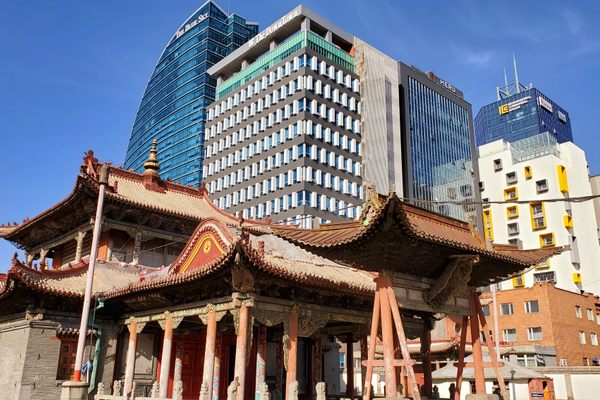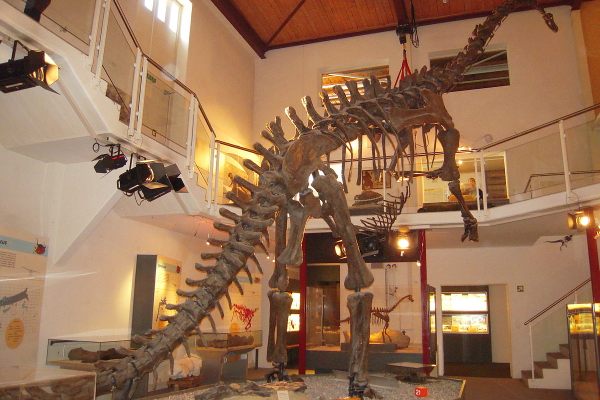Natural History Museum of Mongolia
An exceptional assortment of fossils recovered from private collections.
The Gobi Desert on the Mongolia-China border is a beautifully desolate area, but millions of years ago, when dinosaurs roamed, it teemed with life. That combination makes it a world-class source of fossils. It’s the type of place where you can find protoceratops skulls, dinosaur eggs, and a full skeleton of Tarbosaurus bataar, all of which are on display at the Natural History Museum in Ulaanbaatar, which was amalgamated with the old Central Museum of Mongolian Dinosaurs in 2019.
The museum holds some real paleontological gems within its walls. Its openly mounted skeletons of original fossils rather than cast copies are a rare sight to behold.
The first sight past the ticket booth is a showstopper: the dramatically lit Tarbosaurus bataar skeleton, which closely resembles a Tyrannosaurus Rex, the famed North American predator. Another room (of three) contains a full skeleton of an oviraptor, which stood at a height equivalent to a human’s chest.
Perhaps even more incredible than its collection is the museum’s origin story. While Mongolia is a treasure trove of dinosaur fossils, the country’s riches have long been smuggled beyond its borders. This was the case for the museum’s entire collection, until foreign courts mandated their return. The judgment of an American court to hand over the Tarbosaurus bataar skeleton in a case launched by Mongolia’s president prompted the museum’s founding. Another case made headlines when Nicolas Cage returned a Tarbosaurus bataar skull he had bought years earlier (the American actor was not accused of wrongdoing).
These successes have spurred more repatriation efforts and investments. So while it may be some time until live stegosauruses wander an amusement park, a shiny future for Mongolian paleontology appears within reach.
Know Before You Go
Displays in Mongolian and English explain each specimen and offer informational tidbits, such as why it's entirely reasonable to ask if dinosaurs had feathers. A local, English-speaking guide is usually on hand as well. The museum is open everyday from 10 to 7 (summer) or 9 to 6 (winter), even during holidays such as Naadam.
Look for a giant depiction of a dinosaur erupting from the building's facade. That is the side entrance—walk clockwise to the front door.
























Follow us on Twitter to get the latest on the world's hidden wonders.
Like us on Facebook to get the latest on the world's hidden wonders.
Follow us on Twitter Like us on Facebook